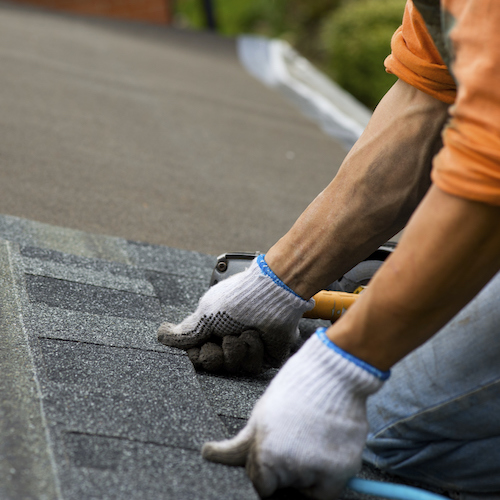The Anatomy of a Roof: Key Components and Their Functions
Understanding Your Roof’s Essential Parts for Better Protection and Maintenance
At Texas Roofing Pro, we understand that your roof is your home’s first line of defense against the Lone Star State’s challenging weather conditions. With decades of experience serving Texas homeowners, we’ve seen firsthand how understanding your roof’s anatomy can help you make informed decisions about maintenance, repairs, and replacements. From the intense summer heat and UV exposure to sudden hailstorms and powerful winds that frequently impact areas throughout Texas, your roof must withstand some of the most demanding weather conditions in the country. Our team of certified professionals specializes in helping homeowners navigate the complexities of roofing systems, ensuring every component works together to protect your most valuable investment. Whether you’re planning preventive maintenance, dealing with storm damage, or considering a complete roof replacement, understanding how each part of your roof functions will empower you to make the best decisions for your home and family.

Why Understanding Roof Components Matters for Texas Homeowners
Your roof is far more complex than it appears from the ground. Each component plays a crucial role in protecting your home from Texas’s extreme weather conditions. Recent industry data shows that roofs typically last 20-50 years depending on materials and maintenance, but understanding your roof’s anatomy can help you maximize that lifespan.
In Texas, where hail damage and high winds are common concerns, knowledge of your roof’s components becomes even more critical. The Texas Department of Insurance requires specific building standards for windstorm resistance, and understanding these requirements can help you make informed decisions about materials and maintenance.
Structural Foundation: The Skeleton of Your Roof
Trusses and Rafters: The Framework
Think of trusses and rafters as the skeletal system of your roof. Trusses are prefabricated triangular frames with strong load capacity, commonly used in modern construction for their efficiency and strength. Rafters are diagonal beams that run from ridge to eaves and create the roof slope. These structural elements must be properly engineered to handle Texas wind loads, which can exceed 130 mph in coastal areas.
Roof Decking (Sheathing): The Foundation
The roof deck is the structural foundation base for the roof system and is usually made of wood or plywood. Most roofers use OSB (Oriented Strand Board) or plywood, and they fix it onto trusses. In Texas, the windstorm requirements specify a minimum of 7/16″ OSB or 14/32″ plywood, properly nailed according to state building codes.
Critical Weather Barrier Components
Underlayment: Your Secondary Defense
Underlayment is a waterproof or water-resistant layer installed beneath the shingles, providing an additional barrier against water infiltration. This thin layer of material, usually synthetic or felt, helps form a barrier between your home and the elements, specifically rain and snow.
For Texas homes, synthetic underlayment is becoming increasingly popular due to proven water-resistance performance and long-lasting durability. In areas with roof slopes from 2:12 up to 4:12, double underlayment application is required under Texas building codes.
Shingles: Your Primary Protection
Shingles are the outermost layer of the roof, providing the primary defense against weather elements like rain, snow, and UV rays. Asphalt shingles remain the most popular choice due to their relatively long lifespan of 20 to 25 years and affordability. In Texas, it’s crucial to choose shingles tested to ASTM D 3161 with 110 mph wind resistance or higher, and UL 2218 Class 4 impact-resistant products for hail protection.
Types of shingles include:
- 3-tab shingles: The most economical choice with a uniform, flat appearance
- Architectural shingles: Multi-layered for enhanced durability and dimensional appearance
- Designer shingles: Premium options that mimic cedar, slate, or wood shake
Water Management System
Flashing: Leak Prevention at Vulnerable Points
Flashing is made from metal or other waterproof materials and is installed around roof penetrations such as chimneys, vents, and skylights to prevent water seepage. Proper flashing installation is critical for preventing leaks around these vulnerable areas where different materials meet.
Common flashing locations include:
- Chimney and vent flashing around stacks and pipes
- Valley flashing where two slopes meet
- Step flashing where the roof meets vertical walls
Gutters and Drainage Components
Gutters collect and direct rainwater away from the roof and foundation, preventing water damage and erosion. Your gutter system includes:
- Fascia: The vertical board behind gutters that provides support
- Soffit: The underside of roof overhangs, often vented for attic airflow
- Drip Edge: Metal flashing that directs water away from fascia and into gutters
- Downspouts: Direct water down and away from your home’s foundation
Ventilation: Climate Control for Your Attic
Intake and Exhaust Ventilation
Proper ventilation prevents heat buildup and condensation, which can lead to mold and shortened shingle life. Texas homes need effective ventilation to handle extreme summer temperatures. The recommended ratio is one square foot of net ventilation area for every 150 square feet of attic floor space.
Key ventilation components:
- Ridge vents: Continuous exhaust along the roof peak
- Soffit vents: Intake at the eaves that feeds airflow
- Gable vents: Supplemental ventilation on gable ends
Roof Geometry and Special Areas
Ridges, Hips, and Valleys
These geometric features require special attention and materials:
- Ridge: The horizontal peak where two slopes meet
- Hip: The outward angled intersection of two roof planes
- Valley: The inward angled trough where slopes meet (a common leak site if not properly flashed)
Protecting Your Investment in Texas
Regular maintenance and understanding of your roof’s anatomy are essential for maximizing your roof’s lifespan in Texas’s challenging climate. Key maintenance practices include:
- Annual professional inspections, especially after severe weather
- Keeping gutters clean and clear of debris
- Checking for missing or damaged shingles after storms
- Ensuring proper ventilation to manage heat and moisture
At Texas Roofing Pro, we provide comprehensive roof inspections that examine every component of your roof’s anatomy. Our certified technicians understand Texas building codes and can identify potential issues before they become costly problems.
Ready to Ensure Your Roof is Ready for Texas Weather? Contact Texas Roofing Pro today for a comprehensive roof inspection and expert assessment of all your roof components. Our experienced team will help you understand your roof’s condition and recommend the best solutions for your home’s protection!

